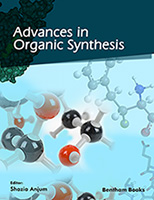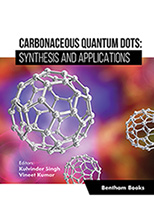This e-book is devoted to applications of neutron scattering and other experimental methods to different biological problems, in which the dynamics of macromolecules plays the key role. Valuable information about the dynamics of proteins, membranes, lipids, nucleic acids and saccharides and so on can be found in this book. This information is very useful for many medical and pharmacological applications.
The book is arranged in the following way:
-
two papers from Section I by Mark T. F. Telling (1) and Salvatore Magazu et al. (2) are devoted to the brief discussion of those abilities which are given by the quasi-elastic neutron spectroscopy.
-
six other papers are divided into three Sections, which are devoted to the dynamics of macromolecules (Section II, papers (3) and (4)), the role of bioprotection mechanisms in extreme environment (Section III, papers (5), (6) ) and the complementary aspects of the neutron spectroscopy, computer simulations and other techniques (Section IV, papers (7) and (8)).
It is necessary to note, that special attention in (1) is paid to the role of the intra-cellular water. It is manifested not only in the hydration effects. Its properties change with temperature and the cellular composition, and it its turn they exert influence on the dynamics of biomolecules. In order to clarify this circumstance, the study of the self-diffusion of water molecules is proposed in (1).
In (2) the main attention is focused on the investigation of the mean square displacement (MSD) of hydrogen containing fragments. In connection with this 1) the role of instrumental effects is analyzed and 2) peculiarities of the special procedure (using the Self Distribution Function) for the determination of MSD in different liquids and solutions are considered. Peculiarities of MSD for aqueous mixtures of two homologous disaccharides (i.e. sucrose and trehalose) and dry myoglobin in trehalose environment are discussed.
An overview of recent achievements in the investigation of biological membranes with the help of Elastic and Quasi-Elastic Incoherent Neutron Scattering is presented in (3). Here the main attention is paid to the study of the temperature dependence of MSD for bio-molecules of specified type in complex multicomponent systems, the wave vector dependence of the normalized intensity for EINS and the temperature dependence for the integrated elastic intensity of 1,2-Dimyristoyl-sn-Glycero-3-Phosphocholine. The last characteristics decrease essentially in the narrow temperature interval at T ≈ 315 K , that coincides with the temperature of the dynamic phase transition in pure water (A. I. Fisenko and N. P. Malomuzh, Int. J. Mol. Sc., 10 (2009) 2383; Chem.Phys., 345 (2008) 164). As seems to us such a coincidence is scarcely occasional.
Some questions of the dynamics of Myoglobin in a confined geometry are discussed in the paper (4). This geometry is realized by encapsulation of Myoglobin in a porous silica matrix. Using elastic neutron scattering allows to study the temperature dependence of the MSD of non-exchangeable hydrogen atoms. It is demonstrated that geometrical confinement plays a crucial role in protein dynamics. Mechanisms of suppression of cooperative relaxation in confinement systems are investigated with the help of dielectric spectroscopy.
The bio-protection function of saccharides is analyzed in the paper (5). For this aim vibrational properties of proteins embedded in amorphous saccharide matrices are considered. The experimental results obtained with the help of FTIR and SAXS are completed by computer simulation data. Due to this, different efficiency of saccharides and carbohydrates in preserving biostructures becomes quite clear. The comparison among various sugars matrices shows why saccharides behave differently in their interaction with water and bio-molecules, why trehalose has better biopreserving properties.
The modification of the morphology of lipid assemblies and their dynamics by additions of saccharides are discussed in the review (6). It is taken into account that sugars influence essentially the behavior of headgroups of lipid molecules and methyl groups of their hydrocarbon chains. As a result, significant decrease of the temperature for gel to liquid–crystalline phase transition at the addition of saccharides is observed. The importance of this question is connected with the necessity to maintain cell viability in stressful environmental conditions. The influence of saccharides is studied with the help of DSC, SAXS FTIR and NMR technique. A fine tuning of the multilayer structure at varying the amount of sugar and the stabilization of lipid multilayers is demonstrated. Influence of charged polyelectrolytes on clusterization and the self-assembling in colloidal systems is discussed.
The possibilities of the neutron vibrational spectroscopy or inelastic neutron scattering (INS) are considered in the paper (7). It gives us a clear representation about INS as powerful instrument for receiving significant information about vibrational modes of bio-molecules at non-zero wave vectors, which is complementary to that of Raman and Infrared Spectroscopy. In contrast with the last, INS is sensitive to hydrogen motion. Several characteristic examples for the application of INS are presented. In particular, the spectral function S(, ω)and the dispersion curve for the vibrations of DNA are given. Special attention is paid to the manifestations of infra-cellular water, in particular, influence of the hydration effects and isotopic replacement of H on D.
A synergistic aspect of MD simulations and experimental information obtained by inelastic neutron scattering, small angle X-ray and neutron scattering, and other techniques is discussed in the paper (8). Comparison of different approaches is realized at the level of the scattering functions or quantities derived from them. The situation is clearly illustrated by a schematic square. The usefulness of such an approach to the analysis of protein dynamics is demonstrated at the consideration of fine details in the behavior of protein chains near the glass transition temperature. This methodology is especially important for the testing of simulation models, applied, in particular, to the study of the protein-solvent dynamical coupling and hydration effects.
This book not only introduces new results obtained by neutron scattering methods, but it also stimulates the formulation of new ideas. I hope that this book will be useful for readers of different fields: specialists in Biophysics and its applications, medics, physical, biological and medical students and postgraduate students.
Professor Nikolay P. Malomuzh





